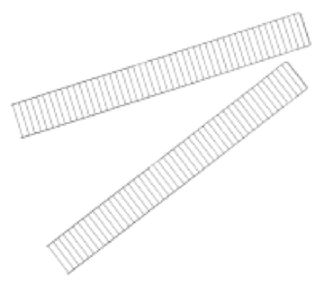SPLINT, CRAMER, metal, foldable, arm
STD
EMEQSPLK1A-
Valid Article
Account code:
60210
HS Code:
901890
Last Updated on:
02/05/2024, 22:14:03
Former
Code(s):
EMEQSPLK1A
M030502 - Bandages and splints
European Medical Device Nomenclature (EMDN) is the nomenclature of use by manufacturers when registering their medical devices in the EUDAMED database. EMDN is characterised by its alphanumeric structure that is established in a seven-level hierarchical tree.
In Europe, medical material that fulfills the definition of a medical device according to the MDR (Medical Device Regulation) is classified into 4 classes
The product is part of at least one Kit.
A kit is a collection of products (medical and/or logistic) that are needed for a certain intervention in emergency. The choice and quantity of the articles reflects the MSF protocols for this specific situation. The use of Kits allows to start an intervention without a detailed evaluation.
SPLINT, CRAMER
Definition
Light weight and malleable metal lattice used as an emergency splint before applying a cast.
Synonym
wire ladder splint
Specifications
Technical specifications
- Epoxy-coated or vinyl coated metal
- Cross-wires 2 cm apart
- Proximal end with rounded corners
- Foldable splint in order to get the desired angle (up to 90°)
- Size:
- EMEQSPLK1L-: 100 cm long, 10 cm width
- EMEQSPLK1A-: 50 cm long, 8 cm width
Packaging & Labelling
Unit packaging
Instructions for use
This splint is designed to immobilize temporarily a limb (e.g. an arm in the correct position for a infusion). If the immobilization must be prolonged (e.g. for a broken limb), a plaster cast is more anatomical.
This splint cannot be used on its own. It requires a covering and an attachment (bandage, surgical drape etc.).
This splint can also be used for making an arm-and-chest plaster.
Some restricted information has been hidden. Sign in
to see this information





![[KMEDMHCE23-] (mod OPD) MEDICAL EQUIPMENT 2021](/web/image/product.template/574347/image_256/%5BKMEDMHCE23-%5D%20%28mod%20OPD%29%20MEDICAL%20EQUIPMENT%202021?unique=f41629f)
![[KMEDMHWE33-] (mod ward) MEDICAL EQUIPMENT 2021](/web/image/product.template/574356/image_256/%5BKMEDMHWE33-%5D%20%28mod%20ward%29%20MEDICAL%20EQUIPMENT%202021?unique=f41629f)
![[KMEDMHIE21-] (mod ICU) EXAMINATION-RESUSCITATION EQUIPMENT](/web/image/product.template/574340/image_256/%5BKMEDMHIE21-%5D%20%28mod%20ICU%29%20EXAMINATION-RESUSCITATION%20EQUIPMENT?unique=22350c3)
![[KMEDMHAE23-] (mod AMP) MEDICAL EQUIPMENT 2021](/web/image/product.template/574351/image_256/%5BKMEDMHAE23-%5D%20%28mod%20AMP%29%20MEDICAL%20EQUIPMENT%202021?unique=bf82f3a)
![[KMEDMCHO021] (module 001) RENEWABLE SUPPLIES 2019](/web/image/product.template/569222/image_256/%5BKMEDMCHO021%5D%20%28module%20001%29%20RENEWABLE%20SUPPLIES%202019?unique=9e0e0a7)
![[KMEDMHHE23-] (mod hospital) MEDICAL EQUIPMENT 2021](/web/image/product.template/574732/image_256/%5BKMEDMHHE23-%5D%20%28mod%20hospital%29%20MEDICAL%20EQUIPMENT%202021?unique=d19c638)